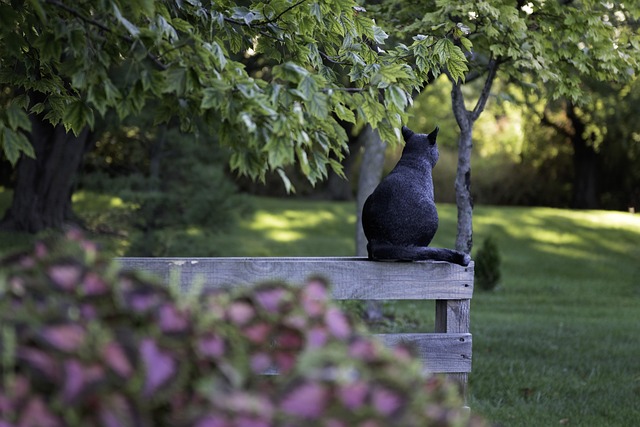In coastal regions, where harsh weather conditions and salt air pose unique challenges, durable wooden fencing is a preferred choice for both aesthetic appeal and functionality. This article delves into the essential considerations for installing robust wood fences in these environments. We explore the inherent benefits of natural wood barriers, guide readers through selecting the ideal wood species for longevity, offer practical installation tips tailored to coastal areas, and provide maintenance strategies to ensure these fences withstand the test of time against harsh marine elements.
- Understanding Coastal Fencing Challenges
- Benefits of Durable Wooden Fencing
- Choosing the Right Wood Species
- Installation Considerations for Coastlines
- Maintenance Tips for Longevity
Understanding Coastal Fencing Challenges
Coastal areas present unique challenges for fencing due to their harsh environments. Saltwater, strong winds, and varying temperatures can significantly impact traditional fencing materials, leading to frequent replacements and maintenance costs. The key challenge is finding a durable solution that can withstand these elements while also blending aesthetically with the coastal landscape.
Wooden fencing, when properly treated, offers a promising option for coastal properties. Treated timber has shown remarkable resistance to saltwater corrosion, ensuring its longevity despite exposure to the harsh marine environment. Advanced treatment methods, such as pressure-treated lumber or specialized coatings, further enhance its durability, making it an excellent choice for those seeking both functionality and visual appeal along the coast.
Benefits of Durable Wooden Fencing
Durable wooden fencing offers numerous advantages for coastal areas, where harsh weather conditions can be a challenge for traditional barriers. One of its key benefits is aesthetics; wood provides a natural and visually appealing finish that enhances the landscape. Unlike metal or vinyl options, wooden fences blend seamlessly with the environment, adding warmth and character to coastal homes and businesses.
Moreover, durable wood varieties are highly resistant to moisture, salt spray, and extreme temperatures, ensuring longevity even in challenging coastal climates. This reduces maintenance requirements compared to other materials that may corrode or warp over time. Wooden fencing can be easily repaired or replaced if damaged, providing cost-effectiveness and peace of mind for homeowners.
Choosing the Right Wood Species
When selecting wood for coastal fencing, choosing the right species is paramount. Softwoods like cedar and redwood are popular choices due to their natural resistance to moisture and decay. These woods have a high oil content that repels water and inhibits mold growth, making them ideal for harsh coastal environments.
However, hardwoods like oak or maple also offer durability, though they may require more maintenance. Their density provides superior strength against wind and impact, which is crucial in areas prone to storms and strong winds. Consider the local climate, exposure to elements, and desired lifespan of your fence when making this critical decision.
Installation Considerations for Coastlines
When installing durable wooden fencing in coastal areas, several unique considerations come into play. The harsh marine environment presents challenges that require specific planning and material choices. One primary concern is the constant exposure to salt air, moisture, and varying temperatures, which can accelerate wood degradation. Therefore, using treated or naturally durable hardwoods like cedar or redwood is essential for long-term protection. These woods have natural resistance to rot and insect damage, making them ideal for coastal settings.
Another critical aspect is the installation process itself. Due to the terrain and potential for shifting sands or tides, fencing posts must be securely anchored into stable ground. This often involves deeper digging than typical land installations. Additionally, regular maintenance is crucial to ensure the fence’s longevity. Regular cleaning, sealing, and painting or staining can significantly extend the life of the wood, protecting it from the relentless coastal elements.
Maintenance Tips for Longevity
To ensure your durable wooden fencing stands the test of time in coastal areas, regular maintenance is key. Start by inspecting your fence at least twice a year for any signs of damage, rot, or pest infestation. Promptly address any issues to prevent them from escalating.
Cleaning is another vital step. Use a soft brush and mild detergent to remove salt buildup and other debris that can accelerate wood deterioration. Apply a fresh coat of protective finish annually to shield the fence from moisture and UV rays, further extending its lifespan.
